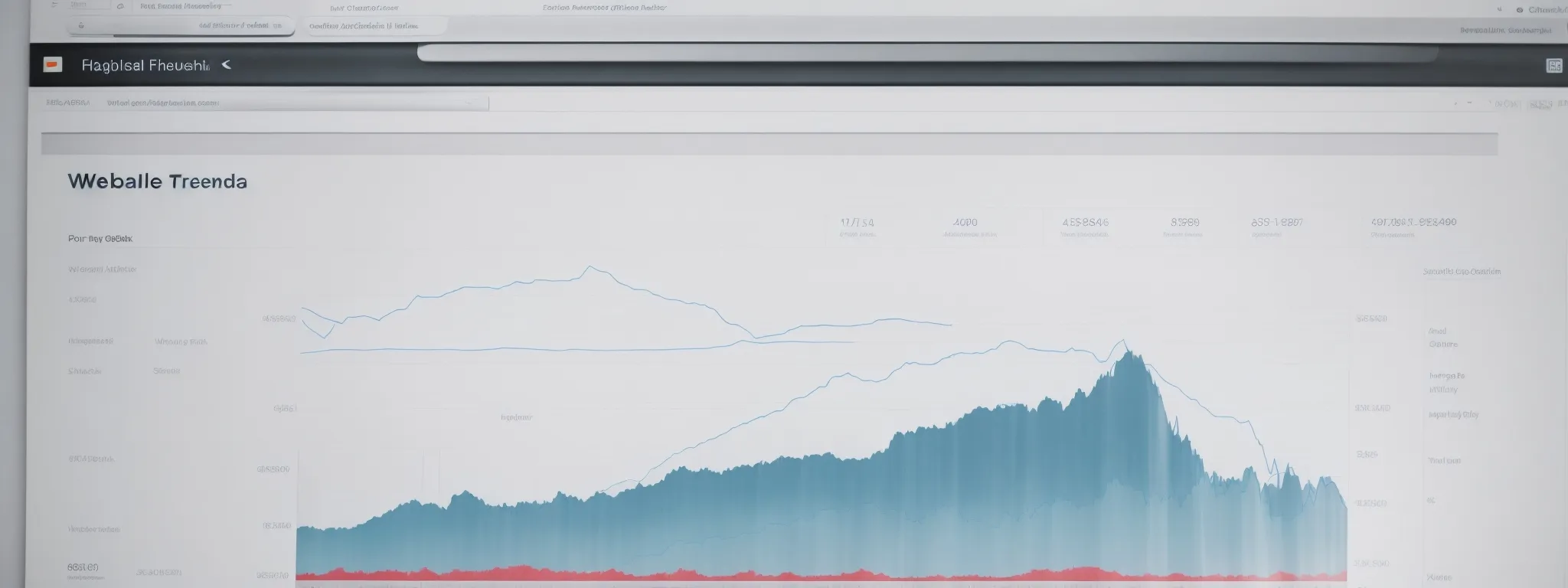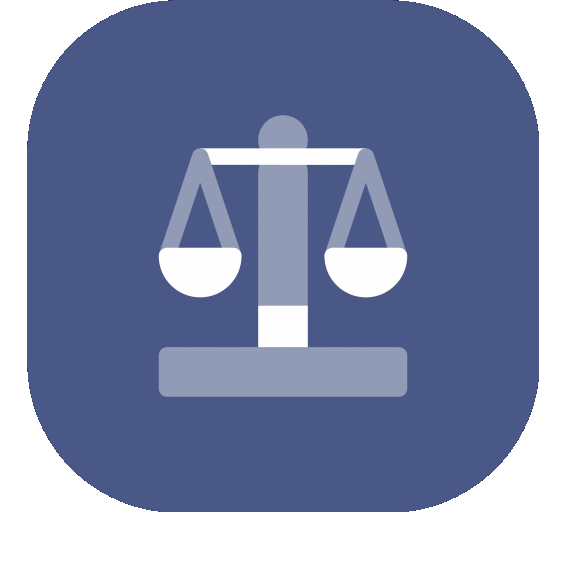SEO Basics For Beginners
Understanding SEO Basics: A Starter Guide for Beginners Embarking on the journey of search engine optimization can seem daunting for beginners, given the intricate tapestry of strategies […]
Understanding SEO Basics: A Starter Guide for Beginners
Embarking on the journey of search engine optimization can seem daunting for beginners, given the intricate tapestry of strategies and tasks involved.
At its core, SEO serves as the compass that guides potential customers to a company’s digital doorstep, making understanding its fundamentals both necessary and rewarding.
This guide offers a tackle box of SEO basics for beginners—a comprehensive map to navigate the vast waters of search engine results.
Clear on-page and off-page tactics are outlined, while insight into content that resonates with search engines and users alike is shared.
In this article, leap into the world of SEO with confidence, uncovering the processes that help web pages climb to the coveted top spots on search engine results pages.
Key Takeaways
- Mastering Both on-Page and Off-Page SEO Elements Is Crucial for a Successful Digital Presence
- A Strategic Approach to Link Building, Focusing on Quality and Relevance, Enhances Domain Authority
- Content Quality and Originality Are Imperative for Engaging Audiences and Improving SERP Rankings
- Utilizing SEO Tools for Data Analysis Leads to Informed Decisions and Continuous Strategy Refinement
- Mobile Optimization and User Experience Are Pivotal Factors for Search Engine Rankings
Grasping the Core of SEO for Beginners

Embarking on the journey of digital marketing requires a clear understanding of its fundamental cornerstone: Search Engine Optimization (SEO).
Defined as the strategic process of enhancing website visibility in organic search engine results, SEO is an intrinsic part of a business’s online success.
Insight into search engine mechanics — how they index and rank pages — is vital for grasping SEO’s complexities.
Comprehending the multifaceted elements that populate a Search Engine Results Page (SERP) provides a framework for businesses to gauge their own online presence.
Moreover, recognizing the pivotal role of ever-evolving algorithms equips marketers with the foresight to adapt their SEO strategies effectively, ensuring their brand resonates with the intended audience.
Define SEO and Its Purpose in Digital Marketing
At its essence, Search Engine Optimization serves as the compass for navigating the digital landscape, guiding companies to prominence within the vast expanse of Google search results. SEO stitches together a tapestry of tactics: meticulous keyword research, on-page optimizations, and quality backlink construction, all purposed to orchestrate higher rankings and increased visibility for web pages.
By harnessing the subtleties of SEO, businesses amplify their digital footprint, carving out a niche in the saturated marketplace. SEO’s pivotal purpose in digital marketing lies not only in driving search traffic but also in building brand authority and fostering trust with potential customers:
- Maximizing organic reach to potential customers
- Increasing customer trust by improving search result rankings
- Elevating brand visibility in a competitive field
Explain How Search Engines Work
Search engines like Google employ intricate algorithms that systematically crawl the web, indexing content along their path. Employing a combination of artificial intelligence and machine learning, these algorithms assess the relevance and authority of web pages, categorizing them in a vast database.
Upon a user’s query, the search engine’s algorithms sift through this expansive index, employing ranking factors to retrieve and display the most pertinent results. Each retrieved web page, now a search result, is ranked by its perceived value to the searcher’s intent, with the goal of delivering an informative and efficient user experience.
Identify the Elements of a Search Engine Results Page
An acute inspection of the Search Engine Results Page (SERP) reveals a structured display brimming with varying types of content. At the top, users typically encounter paid advertisements, marked distinctly to denote their promotional nature.
Following the ads, organic listings take precedence, where each result includes a page title, URL, and a descriptive snippet or meta description that encapsulates the essence of the web page content:
- Page titles delineate the main subject or heading of the listed web page.
- URLs indicate the web address and, when constructed properly, give a clue to the website structure and content relevance.
- Snippets provide searchers a condensed overview of the page’s content, often highlighting the search query within the text.
Scattered among these results are rich snippets, map listings for local queries, and other search features like the “People also ask” box, which collectively aim to enrich user experience and answer queries directly on the SERP.
Clarify the Role of Algorithms in SEO
The dynamics of Search Engine Optimization are intricately linked to the algorithms that power search engines such as Google. These algorithms are constantly updated and refined to ensure that the most relevant and authoritative websites ascend the ranks of the search engine results page.
Algorithms function as the arbiters of online content, evaluating the myriad elements of web pages to determine their placement in search results. They prioritize user experience, relevance, and site quality, making them a key element in shaping a robust SEO strategy.
Crafting Your First SEO Strategy

As businesses embark on constructing their inaugural SEO campaign, strategic planning takes center stage.
Recognizing the importance of methodical SEO planning is the starting block for establishing a strong foundation in the digital sphere.
Newcomers to the field must engage in basic keyword research, a fundamental step that illuminates the path ahead by identifying the phrases and terms that resonate most with their audience.
Further into the foray, it becomes essential to differentiate between on-page and off-page SEO—two pivotal segments that, when optimized, harmonize to boost a website’s prominence.
A well-thought-out content strategy, emphasizing relevance and quality, acts as the linchpin in this grand endeavor.
Together, these components weave the fabric of a nascent, yet potent, SEO approach, empowering businesses to scale the heights of search rankings with precision and finesse.
Recognize the Importance of SEO Planning
In the realm of digital marketing, meticulous SEO planning sets the stage for a successful campaign. It is imperative for companies to craft a detailed blueprint that aligns with their brand goals, targets appropriate keywords, and structures content that caters to both user engagement and algorithmic approval.
Integrating SEO planning into a company’s marketing strategy facilitates a systematic approach towards enhancing online visibility. Not only does this planning allow for a tactical deployment of resources—focusing on high-impact activities—but it also enables continuous improvement through the monitoring and analysis of performance data provided by tools such as LinkGraph’s SearchAtlas SEO software.
Conduct Basic Keyword Research
Basic keyword research stands as the bedrock of a competent SEO strategy, allowing businesses to unearth the terms and phrases most relevant to their target demographic. By employing SEO tools like LinkGraph’s SearchAtlas SEO software, companies can pinpoint high-traffic keywords that hold the potential to elevate their web page in organic search rankings.
Through the strategic selection of keywords based on search volume and competition, businesses lay the groundwork for their content and on-page SEO efforts. This initial step is essential in aligning a web page’s visible elements, like the page title and meta descriptions, with the topics that galvanize the interest of users and satisfy their search intent.
Understand the Difference Between on-Page and Off-Page SEO
On-page SEO refers to the practice of optimizing individual web pages to earn more relevant traffic in search engines. This includes enhancing elements directly on the website such as content quality, keyword optimization, and the utilization of meta tags to facilitate improved indexing and understanding by search engines of a site’s content.
Off-page SEO differs by focusing on actions taken outside of the website to impact rankings within search engine results pages. This encompasses aspects such as link building and social media strategies, which work to strengthen the site’s reputation and authority by fostering external signals and references.
Implement a Simple Content Strategy
A well-curated content strategy is the heart of any SEO effort, requiring clarity and consistency to flourish. By focusing on creating informative, valuable content, businesses ensure they meet user needs and search engine criteria, thus boosting their chances of climbing the SERP ranks.
Strategic deployment of SEO-optimized content, ranging from blog posts to product descriptions, hinges on understanding both the audience’s interests and the keywords they use to search. Integrating these insights into a structured publishing schedule aids in maintaining a steady stream of fresh, relevant content:
- Identify the core topics that resonate with the target audience.
- Align content development with keyword research to address search intent.
- Establish a regular posting schedule to signal relevancy to search engines.
Success in SEO is often a result of precise execution alongside ongoing refinement of content strategies. Companies benefit from utilizing tools like LinkGraph’s SearchAtlas SEO software, which aids in tracking the performance of content and optimizing strategies based on real-time data and insights.
On-Page SEO: Optimize Your Website

In the intricate world of search engine optimization, the mastery of on-page SEO is indispensable for those eager to enhance their website’s potential.
This critical facet of SEO demands proficiency with meta tags and descriptions, which serve as crucial indicators to search engines and shape the user’s first impression in search results.
Additionally, structuring content with well-planned headings not only bolsters readability but also underscores important information, guiding both users and search engines through a site’s content hierarchy.
Rooted in the strategic infusion of keywords, on-page SEO encapsulates the art of embedding these search terms seamlessly within content, amplifying relevance and search engine compatibility.
Beyond text, a comprehensive grasp of user experience, particularly focusing on mobile optimization, ensures a website meets the modern prerequisites for accessibility and user satisfaction.
The forthcoming discussions delve into each of these areas, showcasing how businesses can finesse these elements to craft a website that is both user-centric and favored by search engines.
Master the Basics of Meta Tags and Descriptions
Meta tags and descriptions play a critical role in the optimization of a webpage for search engines. These HTML elements are not directly visible to visitors but provide search engines with metadata about the webpage’s content. Crafting succinct, keyword-rich meta descriptions gives a clear insight into the page’s topic, which can entice users to click through from the SERP, potentially improving the click-through rate (CTR).
Effective use of meta tags ensures that search engines like Google understand the relevance of a web page to user queries, thereby aligning with the site’s SEO goals. It is recommended to Carefully Optimize the Meta Title Tags to reflect the core subject of the content; doing so enhances the webpage’s precision in addressing search intent, a crucial factor for elevating its search engine placement.
Learn How to Structure Content With Headings
Content structure holds immense significance in on-page SEO, largely owing to the clarity and organization it brings both to the user and search engine crawlers. Utilizing headings effectively, namely the H1 through H6 tags in HTML, allows for a hierarchical representation of information, making it easier for users to navigate and for search engines to discern the primary and subsidiary topics of a page.
Equipping content with properly tiered headings, starting with the H1 tag for the main title and cascading down to H2 and beyond for subheadings, enhances readability and SEO simultaneously. This hierarchy serves as a signaling mechanism to search engines, outlining a clear, logical structure that aids in ranking the relevacy of content:
| Tag | Purpose | SEO Benefit |
|---|---|---|
| H1 | Main title of the page | Stresses the primary focus to search engines |
| H2 | Subtopics within the page | Highlights important sections for indexing |
| H3-H6 | Further divisions under subtopics | Organizes content for better user engagement |
Identify and Use Keywords Effectively in Your Content
Effectively harnessing keywords within content is the linchpin of on-page SEO, striking a delicate balance between relevance to the user’s search and adherence to semantic protocols favored by search engines. A business must integrate these keywords naturally throughout its content to align the narrative with prevalent search queries, thereby asserting the page’s salience and improving its visibility.
Through diligent application of keyword research, companies can judiciously position selected keywords in strategic locations, including headings, the opening paragraph, and throughout the body text, ensuring that these keywords resonate with the audience’s needs. This approach not only caters to the user’s search intent but also leverages LinkGraph’s SEO services, optimizing the web page for better ranking prospects in the undulating terrain of search engine results.
Understand User Experience and Mobile Optimization
User experience, often abbreviated as UX, forms a critical aspect of on-page SEO that directly impacts how users interact with a website. A website’s design, load times, and navigability are crucial factors that contribute to a positive UX, thereby influencing a visitor’s likelihood to stay on-site and engage with content.
In tune with modern internet usage trends, mobile optimization has emerged as a non-negotiable facet of user experience. Ensuring that a website is responsive and accessible on various mobile devices is key, as search engines increasingly prioritize mobile-friendliness when determining rankings.
| Element of UX | Importance | Impact on SEO |
|---|---|---|
| Website Design | Crucial for first impressions and usability | Influences engagement metrics and bounce rate |
| Load Times | Key to retaining user attention | Affects search engine rankings especially on mobile searches |
| Mobile Optimization | Essential for a growing mobile audience | Directly influences mobile search rankings |
Off-Page SEO: Building Your Site’s Authority

In the pursuit of mastering Search Engine Optimization, understanding the off-page factors that signal credibility and authority to search engines is paramount.
Off-page SEO, the counterpart to on-page tactics, revolves around actions beyond the confines of a brand’s own web pages.
A central component of off-page SEO is link building, encompassing a variety of methodologies to garner backlinks—a testament to the domain’s influence and popularity.
The value ascribed to different types of backlinks varies greatly; hence, discerning their unique attributes becomes essential.
For businesses intent on solidifying their online presence, cultivating a strategy to secure quality backlinks is a pillar of SEO success.
Each backlink functions as an endorsement, and the collective impact of these can dramatically influence a site’s standing in search engine results, guiding beginners in SEO toward establishing a reputable digital footprint.
Explain the Concept of Link Building
Link Building is a cornerstone of off-page SEO that entails the process of acquiring hyperlinks from other websites to one’s own. This practice is instrumental as each link acts as a signal to search engines, endorsing the quality and relevance of the content, thereby influencing the website’s authority and position in search engine rankings.
Diligent link building requires a strategic approach, focusing on the acquisition of high-quality and relevant backlinks. Securing these links from esteemed and thematically similar sites can substantially enhance a website’s standing in the eyes of search engines:
| Aspect of Link Building | Importance | SEO Impact |
|---|---|---|
| Quality of Backlinks | Paramount for building trust with search engines | Directly correlates to improved rankings |
| Relevance of Linking Site | Central for link contextualization | Enhances the perceived value of content |
Explore Different Types of Backlinks and Their Value
Differentiating between the myriad types of backlinks is crucial for those embarking on off-page SEO. Do-follow links are the most coveted as they pass on link equity and bolster page ranking, while no-follow links, despite being less influential for SEO, can still drive traffic and lend diversity to a link profile.
Acquiring backlinks from a variety of domains, especially those with high authority and trustworthiness, is essential for establishing a website’s credibility. These valuable links act as endorsements, signaling to search engines the reliability and relevance of the content, subsequently elevating the site’s status in search results.
| Type of Backlink | SEO Value | Role in Off-Page SEO |
|---|---|---|
| Do-follow | High | Passes on link equity, enhances page rank |
| No-follow | Moderate | Contributes to traffic, adds diversity to link profile |
| From High-Authority Domains | Very High | Boosts website credibility, signals content reliability |
Discover Basic Tactics for Acquiring Quality Backlinks
Engaging in the pursuit of link acquisition demands proficiency in a spectrum of strategies designed for different backlink tiers. Initiating relationships with authoritative blogs for guest posting services can yield substantial gains in quality backlink profiles, while Meticulously Crafted, Shareable Content can naturally draw links through its inherent value and relevance.
Another effective method is capitalizing on LinkGraph’s white label link building services, which enable companies to benefit from established connections and a refined process of acquiring backlinks without the resource expenditure typically associated with in-house efforts. These endeavors facilitate a growth in both domain authority and search engine confidence:
| Link Acquisition Strategy | Activity | Benefits |
|---|---|---|
| Guest Posting Services | Creating and publishing content on reputable external blogs | High-quality backlinks, increased exposure, and credibility |
| Creating Shareable Content | Producing valuable, information-rich content that prompts organic sharing | Natural link acquisition, audience engagement, and enhanced brand authority |
| White Label Link Building | Outsourcing link acquisition processes to specialized service providers | Time-saving, access to established networks, and consistent backlink quality |
The Importance of SEO-Friendly Content

As businesses initiate their digital marketing endeavors, the creation of SEO-friendly content stands as a pillar of their online growth.
The dynamic interplay between the superior caliber of content and its volume sets the stage for sustainable brand visibility and audience engagement.
Professionals share insights into crafting articles that rank favorably with search engines, emphasizing the imperativeness of originality and the freshness that keeps content current.
To navigate the intricate layers of SEO, marketers must tactfully balance these elements, as each influences the vitality of an overall strategy catered to the evolving nuances of search engine algorithms.
Differentiate Between Content Quality and Quantity
In the realm of SEO, distinguishing between content quality and quantity emerges as a critical consideration. Quality content resonates deeply with readers, offering insightful, well-researched information that aligns with their search intent, fostering engagement and reducing bounce rates.
Conversely, prioritizing quantity without a focus on substance may increase content visibility momentarily, but it often jeopardizes long-term user engagement and trust. Search engines reward the provision of high-quality content that satisfies users’ needs, cementing a site’s standing in the search engine results over time.
Provide Tips for Writing SEO-friendly Articles
For those venturing into SEO-friendly article creation, the art lies in skillfully interweaving keywords without compromising the narrative flow. The goal is to ensure that these keywords appear with a natural frequency throughout the text, thus enhancing visibility while sustaining the reader’s engagement.
SEO experts recommend the strategic placement of primary and secondary keywords within pivotal parts of an article, such as the introduction, subheadings, and conclusion. This practice not only aligns with search intent but also emphasizes the content’s relevance to search engine algorithms, increasing the likelihood of a higher ranking on the SERP.
Explore the Significance of Content Originality and Freshness
In the ever-changing landscape of search engine optimization, content originality and freshness are not mere suggestions but necessities. A unique piece of content stands out in the sea of digital information, garnering the attention of both search engines and users: its originality signals search engines to consider the material as a potential source of new information, which could enhance the site’s relevance and authority.
- Content originality ensures that a website offers novel insights or perspectives, contributing positively to a brand’s uniqueness and search rankings.
- Freshness of content reflects a site’s commitment to staying current and relevant with the latest information, influencing its attractiveness to both search engines and visitors.
Freshness, similarly, plays a pivotal role, as search engines actively look for updated content to provide the latest information to their users. Regularly updating a website with contemporary content not only satiates the user’s quest for the most recent and pertinent information but also strengthens the website’s position as a current authority within its niche.
Monitoring and Measuring SEO Progress

Entering the domain of search engine optimization (SEO) entails not only the application of diverse strategies but also the effective monitoring and measurement of a website’s performance.
Crucial to any SEO undertaking is the implementation of robust tools that meticulously track website rankings and traffic—a must-have for discerning the strengths and potential areas for improvement.
Companies must familiarize themselves with the key metrics that provide insight into the health and success of their SEO efforts.
Adeptly interpreting this data enables businesses to refine their SEO approach continuously, adjusting tactics to align with desired outcomes in an ever-competitive digital landscape.
Introduce Tools to Track Website Rankings and Traffic
Tools designed to track website rankings and traffic function as the navigational instruments essential for SEO professionals. They offer detailed insights into a website’s visibility on search engines, tracking fluctuations in rankings for targeted keywords and indicating the efficacy of current SEO strategies.
Utilizing advanced SEO platforms like LinkGraph’s SearchAtlas SEO software enables a precise analysis of web traffic, uncovering its source, behavior, and conversion trends. This forms a basis for informed updates to SEO approaches, pushing for continuous improvement and fine-tuning:
| Tool Features | SEO Monitoring Capabilities | Benefits for Marketers |
|---|---|---|
| Rank Tracking | Tracks the standing of web pages for specific keywords over time | Identifies successful keywords and pinpoints areas for optimization |
| Traffic Analysis | Provides insights into the quantity and quality of web traffic | Informs content strategy and user acquisition efforts |
| Conversion Metrics | Monitors user actions that contribute to business goals | Guides the refinement of web pages to enhance conversion rates |
Understand the Metrics That Matter in SEO
In the arena of search engine optimization, key performance indicators must be meticulously evaluated to gauge a campaign’s effectiveness. Bounce rate, average session duration, and pages per session emerge as significant metrics, offering insights into user behavior and the overall engagement a website garners.
Acquisition metrics also play a crucial role, with organic traffic being a prime indicator of SEO success; it reveals the reach of a site’s search engine presence and provides a direct measure of how well SEO initiatives are attracting visitors. Conversion rate completes this suite of metrics, serving as the ultimate barometer of a site’s ability to turn visitors into customers or leads, hence defining the tangible return on SEO investment.
Learn How to Interpret Data to Refine Your SEO Approach
Interpreting data within the context of SEO is tantamount to decrypting a strategic map: it requires discernment and the ability to relate metrics to actionable items. By analyzing trends in search rankings, traffic patterns, and user engagement, businesses can pinpoint the strengths and limitations inherent within their current SEO strategies. This process fosters informed decision-making, allowing the refinement of methods to better suit the target audience and search engine algorithms.
Applying a data-driven approach empowers businesses to tailor their SEO tactics with precision and adaptability. After identifying key metrics, companies must delve into the narrative these numbers unveil, discerning areas ripe for optimization, whether that be in keyword targeting, content quality, or the user experience. Success stems from the ability to conduct periodic assessments and apply findings to steer the SEO campaign towards measurable progress:
- Analyze search ranking fluctuations to evaluate keyword performance.
- Study traffic sources to understand which channels are rendering the most valuable visitors.
- Assess user engagement metrics to improve content and website features for better retention.
Conclusion
In conclusion, grasping the fundamentals of SEO is vital for beginners in the digital marketing space.
A solid command of SEO basics—ranging from keyword research to on-page and off-page optimization—is essential for enhancing a website’s visibility and authority in search engine results.
By understanding how search engines work and the significant role of their algorithms, newcomers can develop SEO strategies that drive organic traffic, build brand trust, and outshine competition.
The successful implementation of SEO involves producing high-quality, SEO-friendly content, complemented by continuous monitoring and refinement based on performance metrics.
Armed with these core principles and a data-driven approach, beginners can lay a strong foundation for their website’s search engine success and foster long-term digital growth.














































































